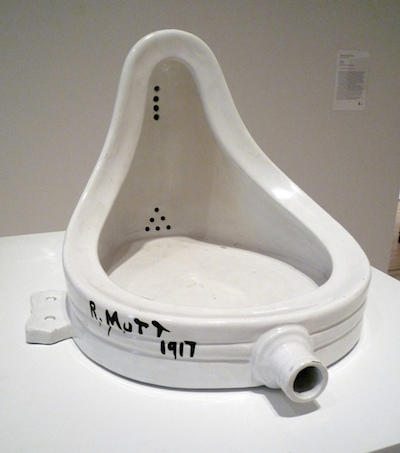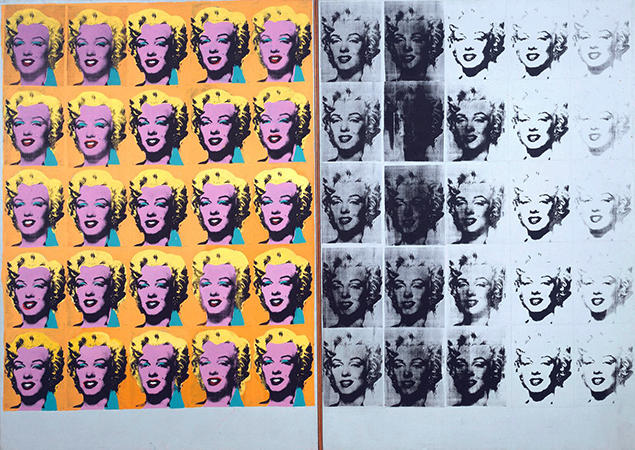Introduction
Although popular culture is often looked down upon or even antagonized as the lowest common denominator of artistic expression, it has sparked several art pieces and inspired numerous artists (Irvine, 2012). Therefore, the phenomenon of popular culture is not to be detached from art. Quite on the contrary, an overview of the subject matter may help determine how pop culture affects art. It is quite remarkable that the two phenomena under analysis, while traditionally interpreted as the opposites of each other, have a common characteristic of being hardly identifiable. Defining the term “art” is just as hard as pinning down the essence of popular culture.
Although the concept of popular art is usually dismissed as a mock-version of culture, the art pieces that have sparked from popular culture, were inspired by it or originated from it, can be viewed as an essential element required to bring the two concepts together. As a result, people have the opportunity to express themselves through art by rendering their emotions and experiences with their help. The process is, in fact, reciprocal, as art pieces, is based on the topical issues and ideas, allow viewing the latter two from an unusual perspective and, therefore, cause new ideas to emerge.
A Brief History
The idea of blurring the line between art and popular culture is, in fact, far from being new. The term itself (i.e., “pop art”) stems from the 1920s British movement and was supposedly coined by the followers of the Dadaist movement (Beals, 2013). Given the fact that pop art turns out to be an extension of a specific artistic movement, it could be argued that popular art pieces may warrant the title of such.
However, a closer look at the phenomenon of Dadaism will reveal that the identified movement, which flourished in the late 1940s, relied heavily on the philosophy of Cynicism as it implied that the culture producing the event as horrendous and despicable as the WWI could not possibly have any intrinsic value whatsoever. Therefore, Dadaism was set up as not merely the lowest form of art, but, rather, anti-art, i.e., the movement that would subvert the existing concept of artistic expression (see Fig. 1).
With the above information in mind, considering pop art as an extension of Dada would be quite a stretch given the fact that the two have different purposes (i.e., expansion of art versus eradication thereof). At present, the reception of popular art seems to have shifted from dismissing it as unwarranted of the title to the fear of popular concepts blocking artists from producing creative and original ideas. The confrontation of art and popular cultures no longer in existence; instead, the two notions seem to have been merging for quite a while, leading to the production of a range of art pieces (Covach & Everett, 2013).

From Art to Pop Culture
One might argue that the transition from the rejection of popular culture as an element of art to its acceptance and the celebration of the opportunities that the combination of the two may provide is a significant step in the right direction. Indeed, given the fact that art is not supposed to be a thing in itself but, rather, should reflect the author’s concept of the world, their philosophy, etc., it is important that the two areas under analysis should have points of contact.
Indeed, some of the stages of popular art development have proven to be rather important in the overall evolution of human thought and the representation of the world with the help of different media. For example, Andy Warhol, who can be considered the founder of the concept of popular art, permitted making the latter more humane, therefore, rendering some of the life choices that people have to make with the help of his artworks.
For instance, the famous print, in which the image of Marilyn Monroe’s face was duplicated several times, helped address the notion of compassion fatigue (Hawkins, 2013). The identified state of mind can be defined as the loss of the capability to empathize with the people that they no longer see or the events that they do not witness anymore (Peres, 2013). The depth of his works is truly amazing, and this endeavor at capturing the essence of the epoch deserved appreciation. As a result, he managed to represent art pieces as something relatable by not only choice art critics but also everyday members of modern society (see Fig. 2).

Modern pop art, while admittedly retaining certain elements that help it challenge the viewers into identifying themselves with the pieces and considering topical dilemmas from an unusual viewpoint, tends to be rather manipulative. The identified characteristic of the contemporary pop art specimens becomes especially evident when it comes to the evaluation of art macabre, which attempts at shocking the viewer into paying attention as opposed to representing the ideas and beliefs of the ostensibly tormented author.
New Opportunities
Nevertheless, popular culture admittedly opens new horizons for art. With the increase in the impact that social media has on people’s lives, art can be made available to all people interested in it, which contributes to a better understanding of what art is, what functions it plays in a person’s life, and where the line between art and life is. In fact, the Marilyn Diptych by Warhol mentioned above is supposed to represent two women, i.e., the bright and colorful movie star and the actual human being that lived and died tragically (Piechucka, 2014 ).
It could be argued that pop culture ubiquity, which inevitably causes new forms of pop art to overstay out their welcome after they have been worn out by the people trying to reproduce it, invalidates the very concept, rendering the idea of popular art pointless. However, the changes that the artworks go through when being reexamined contribute to the further evolution of art, creating room for new and innovative concepts.
Thus, pop art encouraged creativity and enhances the process of searching for the means of expressing one’s thoughts and ideas. In a certain way, a pop-art object can be both the manifestation and the critique of the phenomenon as a whole.
Therefore, as a form of self-discovery and a continuous interception, the phenomenon of pop art has clearly warranted its existence. Although it is often viewed as degrading to art since it panders to the target population instead of aspiring people, it justifies its existence by allowing people to view the connection between art and reality. Understanding the link between art and reality, people are likely to become curious about the ideas that art may convey, as well as the means of rendering their emotions, philosophy, and values with the help of art. As a result, popular art may become the language that the global community may learn to speak for its members to become closer to each other and, possibly, even resolve some of the contemporary social and cultural issues.
References
Beals, K. A. (2013). From dada to digital: Experimental poetry in the media age. Web.
Douchamp, M. (1917). Fountain. Web.
Hawkins, J. C. (2013). Life inside the spectacle: David Foster Wallace, George Saunders, and storytelling in the age of entertainment. Web.
Irvine, M. (2012). The work on the street: Street art and visual culture. Web.
Covach, J., & Everett, W. (2013). Traditions, institutions, and American popular tradition: A special issue of the Journal Contemporary Music Review. New York, NY: Routledge.
Peres, M. R. (2013). The focal encyclopedia of photography. New York, NY: Taylor & Francis.
Piechucka, A. (2014 ). Fifteen minutes of fame, fame in fifteen minutes: Andy Warhol and the dawn of modern-day celebrity culture. Polish Journal for American Studies, 8(1), 114-134. Web.
Warhol, A. (1962). Marilyn diptych. Web.